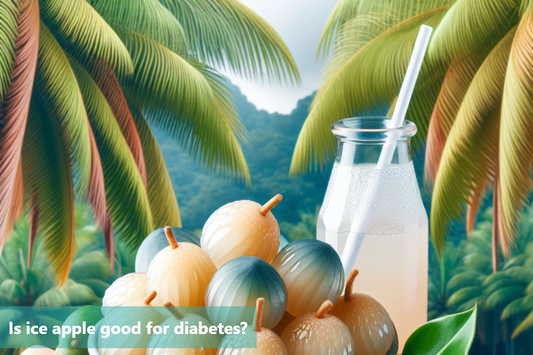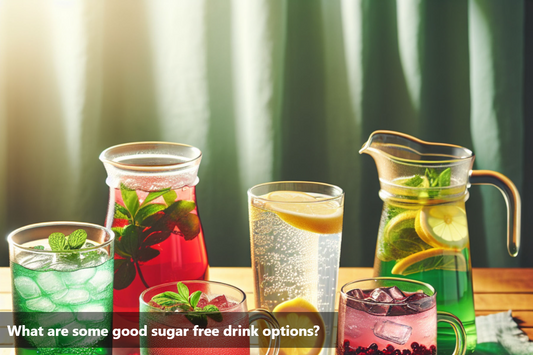Low blood sugar, also known as hypoglycemia, occurs when the glucose levels in your blood drop below normal. This can happen for various reasons including skipping meals, excessive physical activity, or taking too much insulin. It is crucial to understand what to eat when blood sugar is low as it can lead to symptoms like shakiness, confusion, and weakness. The key is to consume foods that can quickly raise your blood sugar levels in a safe and effective manner.
Remember, it's vital to act swiftly when you notice symptoms of low blood sugar to avoid complications. By being aware of what to eat in low blood sugar situations and having suitable options readily available, you can effectively manage hypoglycemia and maintain optimal health and well-being.
Symptoms of low blood sugar
Shakiness or trembling: This symptom often occurs when the body releases adrenaline in response to low blood sugar. Adrenaline triggers the release of stored glucose from the liver, causing trembling or shakiness.
Sweating: Sweating is another response to the release of adrenaline. It helps regulate body temperature but can also be a symptom of hypoglycemia.
Anxiety or nervousness: Low blood sugar can affect mood, leading to feelings of anxiety or nervousness. This can be due to the body's stress response triggered by low glucose levels.
Hunger: When blood sugar levels drop, the body may signal hunger as a way to prompt eating and raise blood sugar levels.
Weakness or fatigue: Glucose is the primary source of energy for the body. When blood sugar levels are low, cells may not have enough fuel to function properly, leading to feelings of weakness or fatigue.
Irritability or moodiness: Similar to anxiety, low blood sugar can affect mood and lead to irritability or mood swings.
Rapid heartbeat (palpitations): Adrenaline release can also cause the heart to beat faster, resulting in palpitations or a sensation of rapid heartbeat.
Blurred vision: In some cases, low blood sugar can affect vision temporarily, causing blurred vision or difficulty focusing.
Dizziness or lightheadedness: Reduced blood flow to the brain due to low blood sugar levels can result in dizziness or lightheadedness.
Confusion or difficulty concentrating: Brain function depends on glucose for energy. Low blood sugar levels can impair cognitive function, leading to confusion or difficulty concentrating.
Headache: Some individuals may experience headaches as a symptom of hypoglycemia.
Nausea or vomiting: While less common, nausea or vomiting can occur as a result of low blood sugar.
Pale skin: Reduced blood flow to the skin due to low blood sugar can lead to paleness.
Tingling sensation: Hypoglycemia can sometimes cause a tingling sensation, particularly around the mouth or in the extremities.
Severe symptoms: In severe cases, hypoglycemia can lead to seizures or loss of consciousness. This is a medical emergency and requires immediate treatment.
Best foods to eat when blood sugar is low
When blood sugar is low, it's essential to consume foods or beverages that can rapidly raise blood glucose levels. These foods should be rich in fast-acting carbohydrates, which are quickly absorbed into the bloodstream to provide an immediate source of energy. Here are some examples of the best foods to eat when blood sugar is low:
Glucose tablets or gel: Glucose tablets or gels are specifically designed to raise blood sugar quickly and are readily available at most pharmacies. They are a convenient option for treating low blood sugar.
Fruit juice: Fruit juices such as orange juice, apple juice, or grape juice contain natural sugars that can quickly raise blood glucose levels. Choose juices without added sugars for the best effect.
Regular soda: Non-diet soda, such as cola or lemon-lime soda, contains a high amount of sugar and can help raise blood sugar rapidly. However, it's essential to consume soda in moderation due to its high calorie and sugar content.
Hard candies: Hard candies like jelly beans, lifesavers, or glucose candies are convenient options for treating low blood sugar on the go. They provide a quick source of glucose and can be carried easily in a pocket or purse.
Dried fruit: Dried fruits such as raisins, apricots, or dates are concentrated sources of natural sugars and can help raise blood sugar quickly. However, they also contain fiber, which may slow down the absorption of sugar compared to other options.
Honey: Honey is a natural sweetener that consists primarily of glucose and fructose, making it an excellent choice for quickly raising blood sugar levels. You can consume honey by itself or mix it with water for a quick energy boost.
White bread or crackers: Foods made from refined grains, such as white bread or crackers, can raise blood sugar rapidly due to their high carbohydrate content. However, it's essential to pair them with protein or fat to help stabilize blood sugar levels afterward.
Sports drinks: Sports drinks like Gatorade or Powerade contain a mix of carbohydrates and electrolytes, making them effective for replenishing energy and fluids during exercise or when experiencing low blood sugar.
Additional tips and considerations
When dealing with low blood sugar, it's essential to consider various factors that can affect how quickly and effectively you can raise your blood sugar levels. Here are some additional tips and considerations to keep in mind:
Monitor blood sugar levels: Regularly monitor blood sugar levels, especially if you are at risk of low blood sugar (hypoglycemia), such as individuals with diabetes who take insulin or certain medications. This can help you catch and treat low blood sugar early.
Be prepared: Always carry a source of fast-acting carbohydrates with you, such as glucose tablets, hard candies, or fruit juice, so you can quickly treat low blood sugar wherever you are.
Check expiration dates: Make sure that the fast-acting carbohydrates you carry with you are not expired, as expired products may not be as effective in raising blood sugar levels.
Avoid overtreatment: While it's important to raise blood sugar levels promptly when they are low, be cautious not to overtreat by consuming too many carbohydrates. This can lead to a rapid increase in blood sugar followed by a subsequent drop, resulting in a blood sugar rollercoaster.
Follow up with a balanced meal or snack: After treating low blood sugar with fast-acting carbohydrates, it's important to follow up with a balanced meal or snack containing protein, healthy fats, and carbohydrates to help stabilize blood sugar levels over time.
Stay hydrated: Dehydration can exacerbate the symptoms of low blood sugar, so make sure to drink plenty of water throughout the day to stay hydrated.
Exercise caution with alcohol: Alcohol can lower blood sugar levels, so if you choose to consume alcohol, do so in moderation and make sure to monitor your blood sugar levels closely.
Educate others: If you have diabetes or are at risk of low blood sugar, educate your family, friends, and coworkers about the signs and symptoms of hypoglycemia and how to assist you if needed.
Work with a healthcare professional: If you frequently experience low blood sugar or have difficulty managing your blood sugar levels, consult with a healthcare professional, such as a doctor or registered dietitian, for personalized guidance and support.
Bottom Line
Knowing what to eat when dealing with low blood sugar is crucial for overall health. Choose quick-acting carbs like glucose tablets or fruit juice to raise blood sugar levels fast. Pair carbs with protein like nuts or yogurt to stabilize levels and maintain energy. By making informed choices, individuals can manage their condition effectively and promote well-being. Remember to prioritize nutrient-dense foods and understand their impact on blood sugar levels.
This Blog post is an initiative by DiabeSmart, to provide accurate and Nutritionist / Doctor approved information related to Diabetes. DiabeSmart is India's first Food brand designed specifically for Diabetics, that has been clinically tested on Diabetics and Pre-Diabetics to deliver 55% - 70% lower Sugar spikes. DiabeSmart is part of Lo! Foods - India's leading brand for Everyday Functional Health foods.











